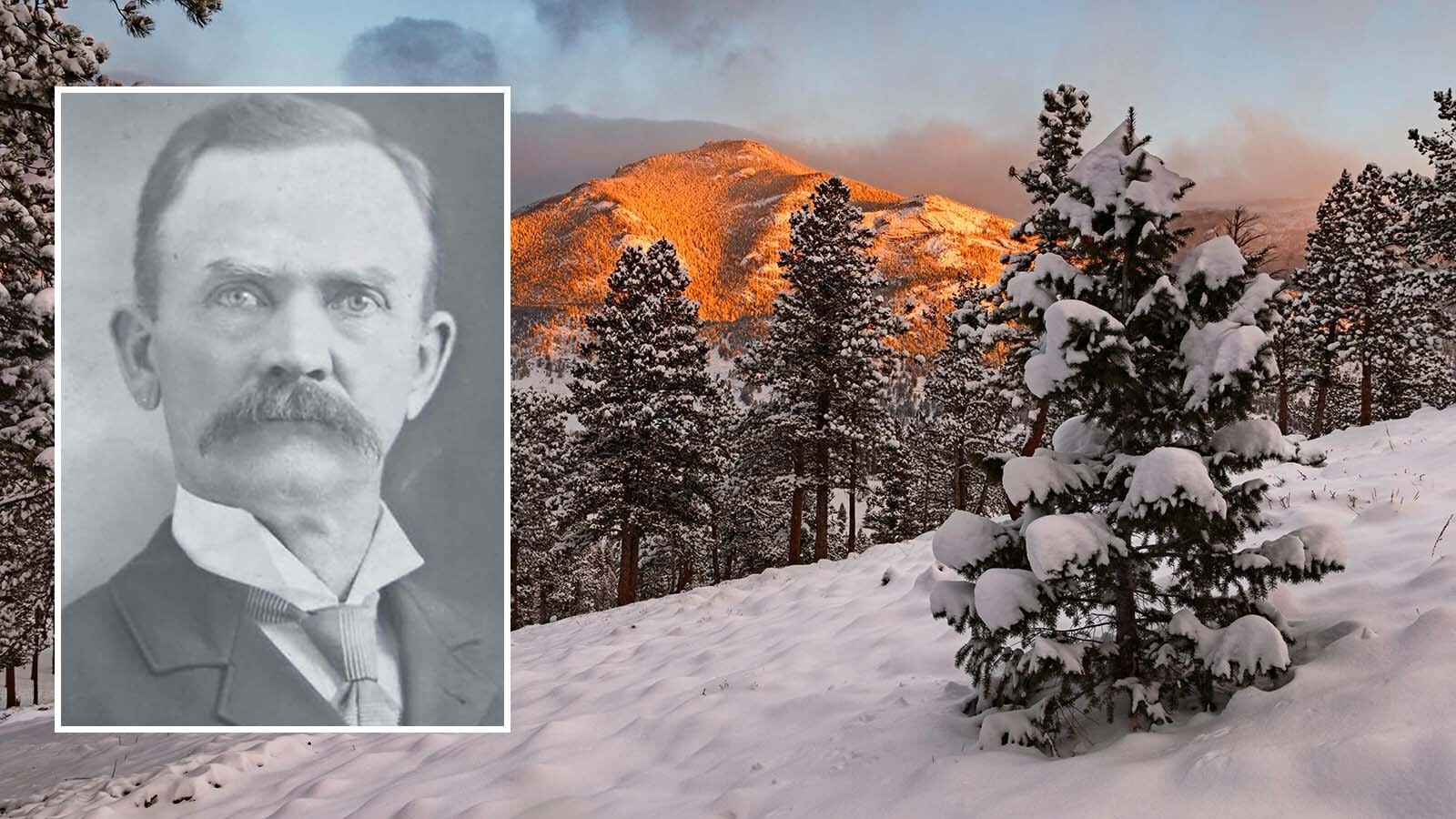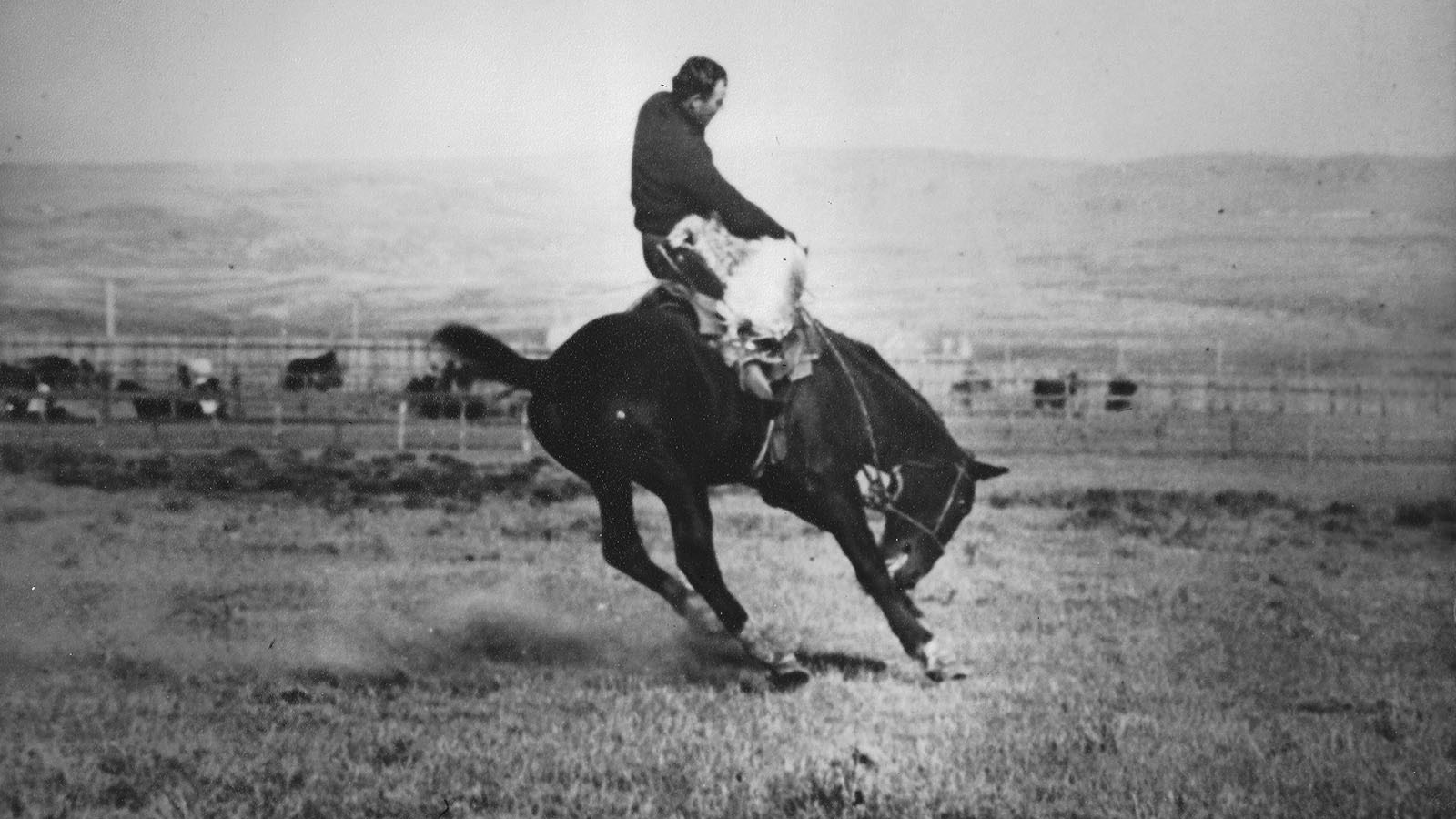CHEYENNE — A small plaque on a stairway wall in the two-story brick building that once served as a terminal and administration building for Boeing Air Transport — later United Airlines — at what is now Cheyenne Regional Airport offers understated “thanks” for the key role the city and state played in the nation’s early aviation industry.
“In recognition of 34 years association between the city of Cheyenne and United Air Lines (sic) dating from pioneer days of the Air Transport Industry, in appreciation of your valuable contribution to the progress of commercial aviation, in lasting gratitude for your friendship, inspiration and assistance during the years of United Air Lines service to Cheyenne, 1927-1961,” the plaque reads.
It’s signed by W. A. Patterson, then president of United Air Lines in 1961.
Before the now 64-year-old memento was handed over to city officials as the airline ended its remaining operations in the city, United Airlines had relied on Cheyenne for three decades.
A Wyoming State Tribune front-page banner headline from April 20, 1929, reflected the reality of its day.
“Cheyenne — Air Capital of the West,” the headline blared. “World’s Largest Commercial Air Line Operator, Boeing, Plans Centralization Here.”
‘Big Part Of Cheyenne’
For Dean McClain, a pilot, Wyoming Department of Aeronautics Commissioner and board member of the Wyoming Aviation Heritage League, the city and state’s contribution to the aviation industry during United Airlines’ early years remains important.
“It was such a big part of Cheyenne, a big part of Wyoming at one time,” he said.
A 1985 National Register of Historic Places document called for the terminal, the lone remaining hangar, and the United Airlines fountain on Eighth Street to be listed on the register.
It characterized these structures as “major symbols of a time when the Cheyenne Municipal Airport was a flourishing air transportation center of national importance.”
“The Boeing/United Airlines terminal building, hangar, and fountain form an architectural complex, symbolizing an era of prosperity for air travel in Cheyenne and Wyoming,” the document states.
The U.S. geography that put Cheyenne halfway between Chicago and San Francisco as well as the lack of 14,000-foot summits in the east-west air corridor across the state made Wyoming a logical place to route early airmail service in the early 1920s. It also became a strategic choice when the airline eventually decided to set up shop.
McClain said it did not make sense for the company to have a maintenance base in Chicago or San Francisco because if planes broke down at either location, it was a long way to go across the country for repairs.
“Put the maintenance in the center,” he said. That decision proved important as aviation shifted from just carrying airmail, to passengers and mail, and then to major airlines that employed twin-engine passenger planes.
1929 Building
The brick terminal building, constructed in 1929, now has the historic registry marker outside and houses the Wyoming Department of Transportation Aeronautics Division and other entities. The hangar to the north was built in 1930 and the fountain in 1934.
United Airlines was formed in 1931 from Boeing Air Transport, Pacific Air Transport, Varney Air Lines, and National Air Transport as a subsidiary company for United Aircraft and Transport Corporation.
It became an independent company in 1934 following a controversy about airmail contracts.
As the company grew, McClain said Cheyenne became the key maintenance hub for its planes, a place where it trained pilots and stewardesses, and a place for aviation research as the industry created technology to overcome challenges. Other nations would send people to Cheyenne to see how it was done.
McClain has a copy of a July 1935 Popular Mechanics magazine that profiled the United Airlines “border-to-border” operation and characterized Cheyenne as the “mainspring of this far-flung air network.”
“Here, on the roof of the continent, is the world’s largest airplane overhaul and repair base manned by 500 expert plane mechanics, engine mechanics, instrument technicians, sheet metal workers, machinists, riggers, battery men, radio experts, seamstresses, inspectors and foremen,” the magazine reported.
At its height there were five hangars for several maintenance functions that sat on what is now Warren Avenue.
The Overhaul
As the overhaul facility, planes would be brought to Cheyenne after 350 hours of flight time and engines would be rebuilt, propellers taken off and examined for defects, instruments removed from cockpits and recalibrated, and seats removed to allow a thorough inspection of the cabin and a cleaning.
After the mail controversy in 1934, the airline’s focus turned to passengers and McClain said United Airlines was the main customer as Boeing produced its Boeing 247 twin-engine aircraft.
The aircraft can be seen on a fountain that the airline constructed outside its administrative building on East 8th Street.
McClain said research done in Cheyenne helped develop de-icing procedures for propellers, the implementation of controllable pitch propellers as well as the development of feathering of propellers on twin-engine planes when one of the engines shuts down.
When World War II arrived, Cheyenne’s United Airlines facility became more important as the government recognized the airline’s advanced maintenance practices, engineering, and overall expertise.
The U.S. Army Air Corps contracted with United to finish the production of their B-17 bombers.
“There were about 5,000 B-17s that were finished here in Cheyenne by United Airlines,” McClain said. “(Boeing) would get them so they were flyable and get them out of there and bring them here to finish them to keep production rolling.”
One of the modifications that occurred in Cheyenne involved the B-17 tail gun position that became known as the “Cheyenne” tail turret in later versions of the aircraft, according to the website WW2Aircraft.net.
“The United Air Lines modification center at Cheyenne, Wyoming developed a modified tail-gun arrangement, to give the twin fifties (50-cal machine guns) greatly increased elevation and azimuth range of the guns, while the old ring-and-bead sight outside the window was replaced with a new reflector sign sight inside the window,” the website states. “The ‘Cheyenne’ or ‘Pumpkin’ installation also improved all-round visibility by using larger windows.”
Link To Doolittle Raid
The historic marker that now stands outside the terminal also notes that Cheyenne maintenance workers modified two B-17s to carry extra fuel and cameras for aerial photography.
The plaque states that United officials learned later the planes were used to provide reconnaissance for then Lt. Col. Jimmy Doolittle’s famous morale boosting bombing raid over Tokyo in 1942.
During the war years, the airline also moved its pilot training from the west coast to Cheyenne. A March 22, 1942, story in the Casper Tribune Herald reported the airline’s effort would “relieve West Coast congestion and permit training at a safer inland point.”
McClain said it was in Cheyenne that United developed the “procedure turn” for runway approaches using a compass heading and a clock for pilots flying on instruments to intersect a navigation signal for landings that is still taught today.
At its peak, United Airlines employed hundreds of people in Cheyenne and during the war years used buses to transport workers between northern Colorado cities and Cheyenne.
A 1939 story in the Casper Daily Tribune stated that the union representing the mechanical division of maintenance workers had more than 400 members. But during the war years those numbers grew to more than 1,600.
Following the war and the advances of aviation technology, including pressurized airplanes and more powerful engines, peaks around Denver were no longer an issue. The airline moved its maintenance facility to San Francisco and pilot training was changed to Denver. Flights stopped landing in Cheyenne.
To keep relations with Cheyenne, the airlines instituted a stewardess training school in the city that continued until 1961.
On Nov. 3, 1961, the airline’s ties with the city were cut. An era ended.
“United Air Lines will close its last installation in Cheyenne, once a major United base, next Friday,” the Casper Morning Star reported on Oct. 28. “Remaining staff members and instructors at United’s education and training center will be transferred to Chicago after the final class of stewardess trainees is graduated.
“Last year, United discontinued its last scheduled passenger service to Cheyenne, a shuttle flight between here and Denver.”
For McClain, the era represented something special.
“It’s just a shame that it is forgotten,” he said.
Dale Killingbeck can be reached at dale@cowboystatedaily.com.













